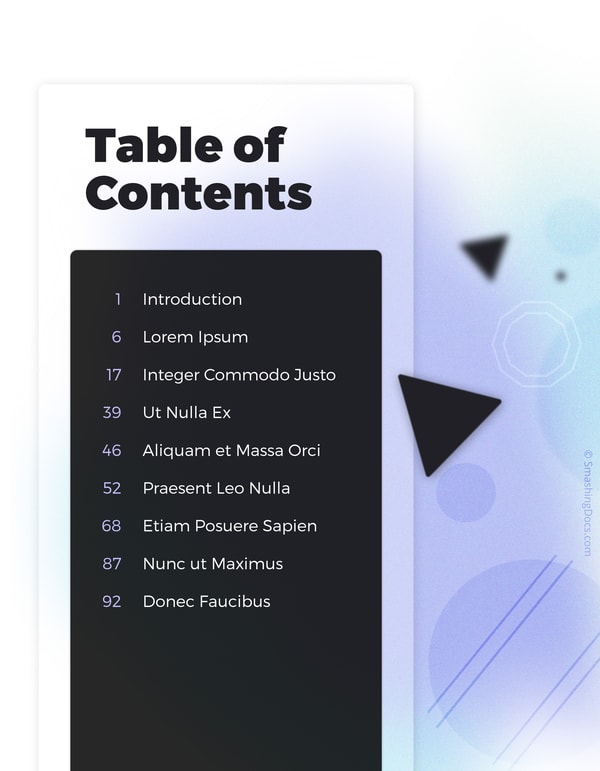
Publishing-Ready! Table of Content Templates
Add the final touch to your manuscript with a customizable table of content template that saves you heaps of time on formatting.

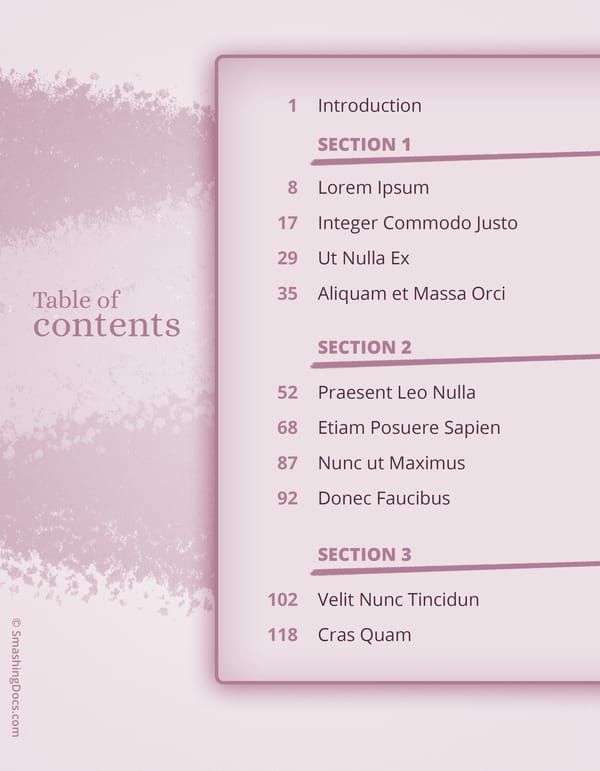
Free Soft Lavender Table Of Contents Template
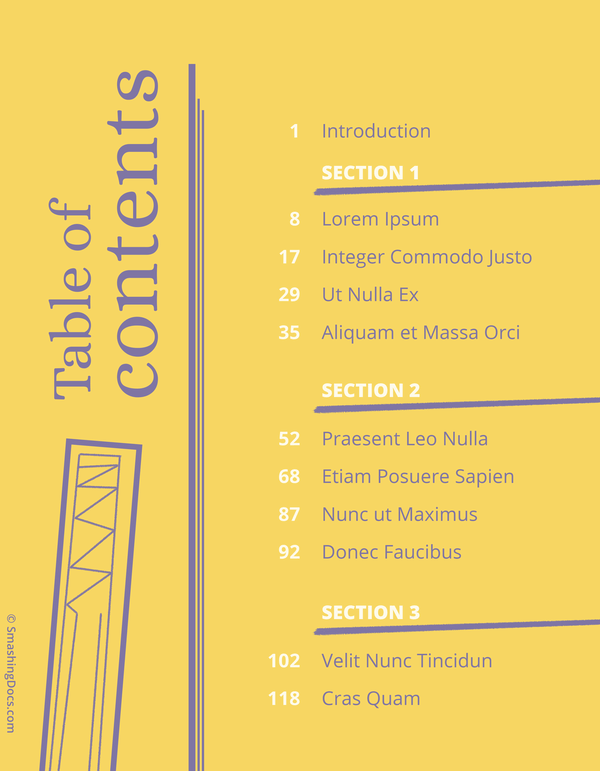
Free Yellow And Purple Geometric Shape Table Of Contents
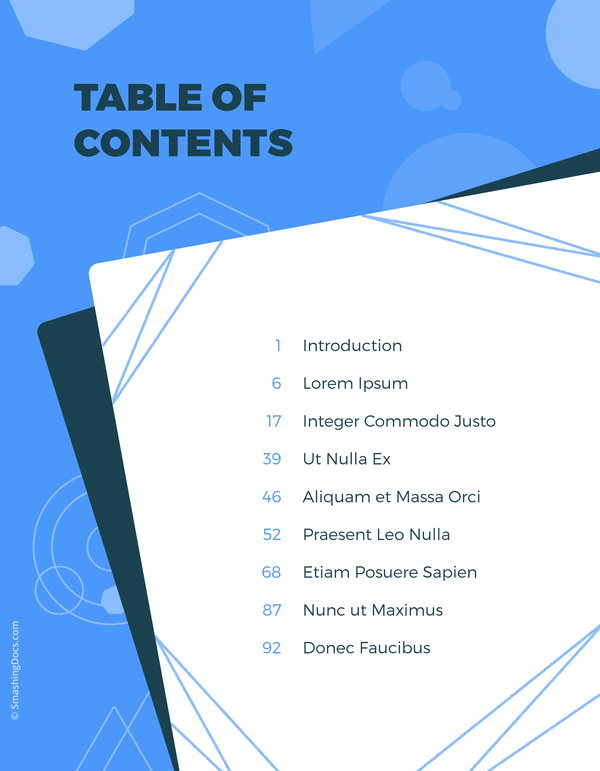
Free Sky Blue Layered Table Of Contents
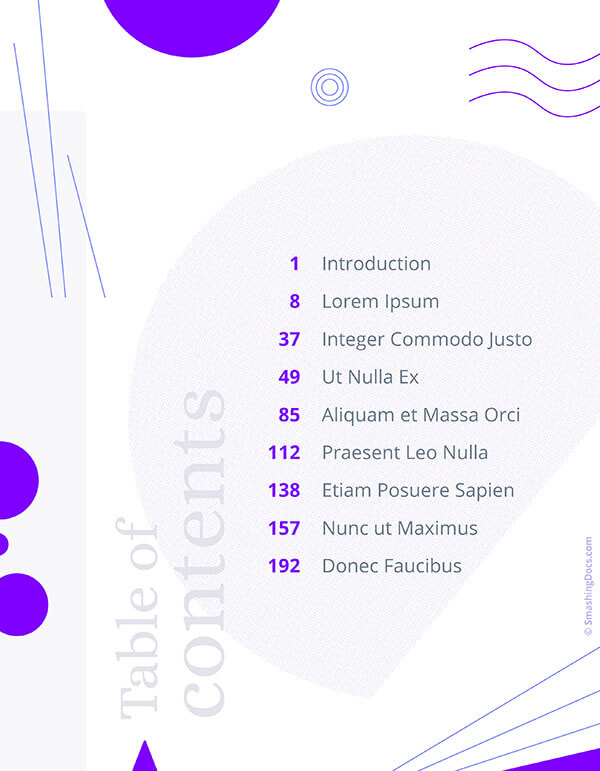
Free Modern and Neat Table Of Contents
Table of Contents: a Gentle Introduction
A table of contents or TOC, is an itemized list of chapters or section titles, prefacing a written work such as a book, a thesis, or an annual corporate report. Though some publishers also place a table of contents at the end of the written work.
The table of contents is somewhat similar to an outline. However, the table of contents may vary in formatting. Some might include descriptive section headings, but others may merely feature numerical numbers of the chapter.
The practice of including a table of contents dates back to medieval times but became standard in printed books during the 15th century.
Today, the table of contents remains a must-have vestige for printed and online documents as it’s a simple and convenient way for navigating the presented information.
What is the Purpose of the Table of Contents?
A table of contents serves as a gateway to the main body of the text, announcing the upcoming information and providing readers with an opportunity to strategize their reading approach. The main purpose of the contents page is to ease navigation and draw the reader’s attention to major structural breaks in the text. It also helps showcase how different book sections address the wider topic from different angles. So don’t underestimate the importance of a well-designed table of contents page as it serves multiple purposes.
What Should Be on a Table of Contents?
A properly designed table of contents has to list all:
- Front matter such as multiple title pages, acknowledgments, foreword, a preface, etc.
- Main sections including all headings and page numbers of all chapters
- Back matter elements such as afterwords, author’s notes, appendices, bibliographies, conclusions, citations, glossaries, epilogues, sources, and suggested reading.
Your table of contents should be neatly formatted, 100% accurate, and easy to comprehend.
How is a Table of Contents Typically Formatted?
A standard table of contents is an itemized list of all section headings, titles, or chapters, displayed in chronological order (as they appear in the book). For published manuscripts, several more requirements exist.
For example, front matter elements (foreword, acknowledgment, etc) are usually indicated in lower-case Roman numerals. The main content and back matter (bibliography, citations, notes, etc) are indicated in Arabic numerals. That said: many publishers now use primarily Arabic figures for the sake of simplicity,
How Do I Make a Table of Contents?
Creating a table of contents is easy since most word processors can auto-generate you one, based on the header titles or numerical lists you use.
To make a table of contents page in Microsoft:
- Select References on the toolbar.
- Then scroll to “Insert Table of Contents”
Once your TOC is generated, verify that all headings and page numbers were correctly included.
After you are fully done working with the text, you can add some extra appeal to your page by using a visual table of contents template (like the ones on this page!). This way you can “brand” your document better and make it even more delightful to peruse.
